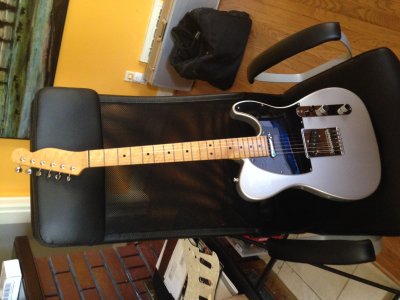Cagey
Mythical Status
- Messages
- 24,425
You say relief is .008" at 7-8th fret, but nut height is:
- E: .023"
- A: .02"
- D: .018"
- G: .016"
- B: .018"
- e: .018"
It would seem the strings are moving at the opposite angle they should be. Those are some tall heights, just for starters - they should be much shallower. Think .012 or less.
With the strings getting closer to the fretboard as you go up, they're going to be hitting frets even if they're not proud.
Lower the nut slots, maybe raise the bridge a tad or add some relief to the neck, and see where you end up.
- E: .023"
- A: .02"
- D: .018"
- G: .016"
- B: .018"
- e: .018"
It would seem the strings are moving at the opposite angle they should be. Those are some tall heights, just for starters - they should be much shallower. Think .012 or less.
With the strings getting closer to the fretboard as you go up, they're going to be hitting frets even if they're not proud.
Lower the nut slots, maybe raise the bridge a tad or add some relief to the neck, and see where you end up.



